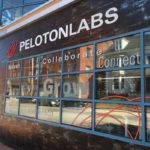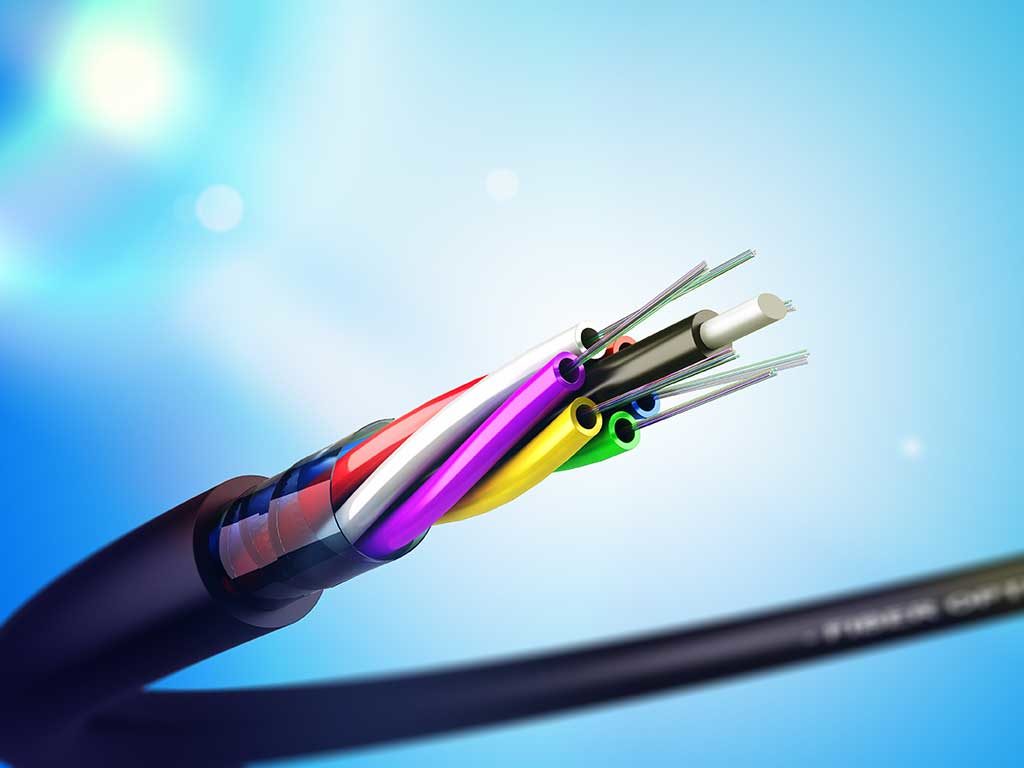PelotonPosts is a monthly interview with a member of PelotonLabs, a co-working space in Portland’s West End with a mission to connect and encourage entrepreneurs stepping out of traditional modes of employment. This month, Peloton’s founder Liz Trice caught up with Tim Yount, co-founder of Fiber Insight, which provides fiber optic training and consulting services and specializes in optical network design, testing, operation, and maintenance.
You provide consulting and training in Fiber communication networks. Who do your clients tend to be?
 Our client list is varied and includes large communications service providers, equipment providers, engineering and installation contractors, US government agencies, as well as owners/operators of private fiber networks. Examples include Verizon, AT&T, First Light, Microsoft, US DoD, NASA, General Dynamics and UBS Bank. We also serve fiber equipment suppliers like Viavi Solutions & MicroCare.
Our client list is varied and includes large communications service providers, equipment providers, engineering and installation contractors, US government agencies, as well as owners/operators of private fiber networks. Examples include Verizon, AT&T, First Light, Microsoft, US DoD, NASA, General Dynamics and UBS Bank. We also serve fiber equipment suppliers like Viavi Solutions & MicroCare.
What brought you to Maine?
The telecom world tends to be pretty transient. After living in several states around the country because of job opportunities, we wanted to settle on the coast. As long-time sailors, we liked Maine for the working waterfront and it’s fishing and boating heritage.
The nature of our business means we spend a lot of time with customers in the field wherever they are located. So, we’re fortunate that if we are close to an airport we can live most anywhere. With Portland’s easy access to two airports, including Boston Logan, we decided the area had everything we wanted. Maine is our fifth state, but the first where our move was solely motivated by our desire to live here.
What’s your background?
I started in fiber while in college in North Carolina working for a Siemens/Corning startup called Siecor, a fiber cable and equipment company. I became involved in testing fiber networks, which led to us moving out west for 15 years where I worked as a marketing manager for several fiber optic companies. That led to me becoming a subject matter expert (SME) in troubleshooting and testing optical networks.
Combining my background with my wife Carla’s experience in software engineering and training, we founded Fiber Insight, LLC in 2014. Getting our business started was a bit of trial and error. At first, we expected to recruit business by promoting our services to companies we did not know at trade shows, but that did not work very well. We quickly realized colleagues we already knew in the industry would be our best resource for new business. By reaching out to them and using social media, mainly Twitter and LinkedIn, plus a little diligence and patience, our business began to grow.
Today, most of our work comes from client referrals which is our best promotion. We believe our success formula is based on industry knowledge, experience, and making sure we provide consistently high quality of services, as well as honesty and integrity. Now in our fourth year in business, we provide certification training and consulting services all over North America, and last year we spent two months living and working in Okinawa, Japan testing fiber infrastructure for the U.S. military.
What’s on the horizon for you?
Our business model seems to be working well and we enjoy what we’re doing, so we plan to continue for the foreseeable future. Also, we enjoy traveling and it’s easier to do if we control our own schedule. Being in our 50’s, we consider ourselves sort of “pre-semi-retired.” (Laughs). We look for opportunities to keep our business sustainable and bring revenue to Maine. We work hard but also like to have fun and enjoy life. We’ve found we can have a more balanced life by owning our own company. To us our quality of life is more important than our bottom line, and if you can deal with the winters, the quality of life in Maine is hard to beat. If things continue to go well, we don’t ever really see ourselves retiring completely.
What have you gotten involved with locally?
My wife is a serial volunteer, so one or both of us seem to always be involved in something with the community. We’ve both been active members of the Portland Community Rowing Association (PCRA) for several years. Carla is an Auxiliarist with the US Coast Guard, and I recently joined the Maine Island Trail Association (MITA) as part of their summer monitor skipper program. Also, we have been involved with local community festivals, and my wife has been a volunteer with Meals on Wheels.
Of course, we’re members of the Maine Broadband Coalition, and our goal there is to give “fiber talks” to help educate communities looking to improve their broadband. So far, we have spoken in town meetings in Bar Harbor and Vinalhaven about the differences between fiber, DSL and coax-based services.
We want to help Maine residents understand how fiber can improve their businesses and communities. Some towns in Maine are declining and will effectively die unless they get the connectivity necessary to keep existing businesses viable and attract new ones. High-speed Internet is a critical part of making it possible for our residents – especially young people – to live and work in Maine.
If any business or community group wants to learn more about fiber, we’re happy to talk over coffee or give a presentation. That’s the local community outreach we love to do, and it also gives us a great opportunity to see many other beautiful places in Maine.
You’ve been a member of Peloton for 2 years.
Yes, Peloton is great because it provides a space for me to get away from distractions of a home office. I also give online webinars that require fast and reliable Internet. Since Peloton offers that as well, I can deliver the webinar from one of the private offices here without any network issues. I’m also doing studio recording here for online training modules, because the sound consistency is better at Peloton than at home. It’s also a great place to meet others and learn about other small businesses in the area.
 FREE LUNCH & LEARN
FREE LUNCH & LEARN
For more information: Tim Yount of Fiber Insight is giving a free public Lunch & Learn at Peloton from noon to 1 p.m. on Monday, April 16th, called “Fiber Basics.” The talk covers the differences between cable, fiber and DSL including the underlying technology and bandwidth differences. It also discusses how to make some sense of the speeds that are advertised by service providers.






